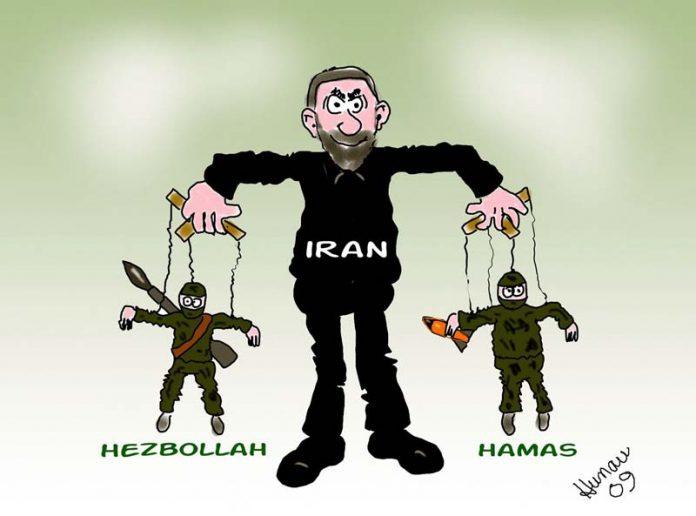
The Arsenal of Tyranny
More than 3,000 assault rifles, 578,000 rounds of ammunition, and 23 guided anti-tank missiles. A shipment from Americans to Ukrainians defending themselves from Russian invaders? No, a shipment from the Islamic Republic of Iran to Houthi rebels attempting to take over Yemen.
The good news is that these weapons didn’t arrive as scheduled. In coordination with the U.S. military, French special forces seized them in the Gulf of Oman on Jan. 15. It’s encouraging to see Western allies working together against common enemies.
But this was no isolated incident. On Jan. 6, US forces intercepted a vessel carrying 2,100 assault rifles from Iran bound for Yemen. And in December, the US Navy seized a boat loaded with 1,400 AK-47 rifles, 226,000 rounds of ammunition, and rocket propellants.
How many such shipments have made it into the hands of the Houthi movement is anyone’s guess. But the insurgents have sufficient firepower to hold much of western Yemen, including Sana’a, the capital.
The Islamic Republic has become the arsenal of tyranny. Thanks to its assistance, Lebanon-based Hezbollah outguns the Lebanese Armed Forces. The regime provides weapons to its troops and proxies in Syria and Iraq, to Hamas and Palestinian Islamic Jihad in Gaza, and, increasingly, also in the northern West Bank, over which the Palestinian Authority has been losing control. Israel does its best to destroy such weapons caches either en route or upon arrival.
Most recently, Tehran has been sending drones to Russia, to be used by Vladimir Putin to slaughter Ukrainians. A weapons factory in Isfahan was recently damaged or destroyed. Israelis have neither confirmed nor denied responsibility. Over the weekend it was revealed that Moscow and Tehran are building a drone factory in Russia.
That should be the last nail in the coffin of the Iran deal President Obama concluded, and from which President Trump withdrew.
President Biden has attempted to revive it in a weaker form. In exchange for the promise of Iran’s rulers to delay – not terminate – their development of nuclear weapons, they’d receive hundreds of billions of dollars they could use to better arm their cronies abroad, make more sophisticated missiles, and continue killing, torturing and imprisoning dissidents at home.
Returning to Yemen: Its civil war has been ongoing since 2014. It’s produced what the United Nations calls the world’s worst humanitarian crisis. The insurgency was launched by the Houthi movement, officially Ansar Allah, “Partisans of God.” The group draws followers from the Zaidi-Shi’ites who constitute about a quarter of Yemen’s 30 million people. Most other tribes are Sunni.
Backing Ansar Allah is one way Iran’s rulers spread their revolution. Through Hezbollah, they have become the most powerful force in Lebanon. Hand-in-hand with Russia, they have propped up the mass-murdering Assad dictatorship in Syria. And they are slowly – though perhaps not surely – turning Iraq into a colony.
Yemen sits on the eastern shore of one of the world’s most strategic waterways: the Bab-el-Mandeb which connects the Red Sea to the Gulf of Aden and, by extension, the Mediterranean to the Indian Ocean.
It would be a game-changer if Tehran took control of that passage as well as the Strait of Hormuz which separates Iran from the Arabian Peninsula and through which 30 percent of the world’s seaborne crude oil trade passes daily.
A ceasefire between the Houthis and the Yemeni government was negotiated last April but lapsed in October. Tehran will do what it can to prevent a diplomatic settlement so long as victory remains in reach.
The Yemeni government is supported by the Saudis, an American strategic partner since President Franklin Roosevelt met with King Abdul Aziz Ibn Saud on Valentine’s Day in 1945. The tacit understanding since The United States will provide security and the Saudis will keep the oil flowing at reasonable levels and prices to fuel international economic growth.
President Obama violated that arrangement when he tilted toward Tehran and told the Saudis to “share the neighborhood.”
The 2018 assassination of Jamal Khashoggi, a Saudi dissident and contributor to The Washington Post, further soured relations.
As a presidential candidate, Joe Biden vowed to make the Saudis “pay the price, and make them in fact the pariah that they are.”
Soon after moving into the White House, he removed the Houthis from a terrorist blacklist (a conciliatory gesture that was undeserved and unreciprocated) and “directed an end to the United States support for the Saudi-led Coalition’s offensive military operations against the Houthis in Yemen.”
Iran’s rulers were undoubtedly delighted. The Saudis were obviously dismayed. Why would the American president help Tehran’s clients? The Houthis launch missiles and drones at Saudi and Emirati targets. Why doesn’t Biden want to make them pariahs? Does he not understand what it would mean if the Houthis rule Yemen on the Saudis’ southern doorstep while Tehran solidifies its Shi’ite crescent north of the Arabian Peninsula?
Some analysts argue that the United States should seek detente with the Houthis. Some of these same analysts had advised – indeed still do – that within the Taliban are moderates with whom we can get along.
The Houthi movement’s slogan is “God is great, death to the US, death to Israel, curse the Jews, and victory for Islam.” Call me crazy but I can’t see free and decent nations finding much common ground with such folks.
If I’m right, America should do all it can to prevent Tehran’s weapons from reaching its proxies – with help from the French, the Israelis, and other allies. It’s not in the US national interest for Yemen to become another colony of the Islamic Republic’s expanding and bellicose empire.
Source: jewishpress





